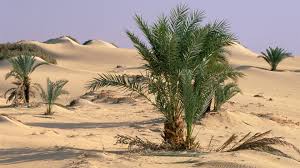
The structure elucidation and
biological activities ofhigh molecular weight algal toxins: maitotoxin,
prymnesins andzooxanthellatoxins
Department of
Chemistry, Graduate School of Science, Osaka University, 1-16
Machikaneyama, Toyonaka, Osaka, Japan
b
Japan Food Research Laboratories, 6-11-10 Nagayama, Tama, Tokyo, Japan
Nat. Prod. Rep., 2000,17, 293-314
DOI:
10.1039/A901979K

.
Maitotoxin (or
MTX) is an extremely potent
toxin produced by
Gambierdiscus toxicus, a
dinoflagellate species. Maitotoxin is so potent that it has been demonstrated that an
intraperitoneal injection of 0.13
µg/kg was lethal in mice.
[1] Maitotoxin was named from the
ciguateric fish
Ctenochaetus striatus—called "maito" in
Tahiti—from which maitotoxin was isolated for the first time. It was later shown that maitotoxin is actually produced by
Gambierdiscus toxicus.
Mechanism of toxicity
Maitotoxin activates Ca
2+ permeable, non-selective cation channels, leading to an increase in levels of cytosolic Ca
2+ ions. It is thought that maitotoxin leads to the formation of pores on these
ion channels. Ultimately, a
cell death cascade is activated, resulting in
membrane blebbing and eventually
cell lysis.
[2] Maitotoxin is known to activate
cytosolic calcium-activated
proteases calpain-1 and
calpain-2, contributing to necrosis.
[3] The
toxicity of maitotoxin in mice is the highest for nonprotein toxins: the
LD50 is 50 ng/kg.
Molecular structure
The
molecule itself is a system of 32 fused rings. It resembles large
fatty acid chains and it is notable because it is one of the largest and most complex non-
protein, non-
polysaccharide molecules produced by any
organism. Maitotoxin includes 32
ether rings, 22 methyls, 28 hydroxyls, and 2
sulfuric acid esters and has an
amphipathic structure.
[4][5][6] Its structure was established through analysis using
nuclear magnetic resonance at Tohoku University,
Harvard and the
University of Tokyo in combination with
mass spectrometry,
and synthetic chemical methods. However, Gallimore and Spencer recently
questioned the structure of maitotoxin at a single ring-junction (the
J-K junction), based purely on biosynthetic considerations and their
general model for marine polyether biogenesis.
[7]
Nicolaou and Frederick on the other hand argue that despite this
biosynthetic argument, the originally proposed structure could still be
correct.
[8] The controversy has yet to be resolved.
Biosynthesis
The core synthetic route is via a
polyketide synthase pathway.
[7]
Total synthesis
Since 1996 the Nicolaou research group is involved in an effort to synthesise the molecule via
total synthesis [9] [10] [11] [12] although the project is currently on hold due to a lack of funding.
[13]
References
Yokoyama,
A et al. (1988). "Some Chemical Properties of Maitotoxin, a Putative
Calcium Channel Agonist Isolated from a Marine Dinoflagellate". J. Biochem 104 (2): 184–187. PMID 3182760.
Estacion, M and Schilling, WP (2001). "Maitotoxin-induced membrane blebbing and cell death in bovine aortic endothelial cells". BMC Physiology 1: 2. doi:10.1186/1472-6793-1-2.
Wang, K. et al. (1996). "Maitotoxin induces calpain activation in SH-SY5Y neuroblastoma cells and cerebrocortical cultures". Arch. Biochem. Biophys. 331 (2): 208–214. doi:10.1006/abbi.1996.0300. PMID 8660700.
Murata,
M et al. (1994). "Structure and partial stereochemical assignments for
maitotoxin, the most toxic and largest natural non-biopolymer". J. Am. Chem. Soc. 116 (16): 7098–7107. doi:10.1021/ja00095a013.
Sasaki, M et al. (1996). "The complete structure of maitotoxin, I; Configuration of the C1-C14 side chain". Angew. Chem. Int. Ed. Engl. 35 (15): 1672–1675. doi:10.1002/anie.199616721.
Kishi, Y (1998). "Complete structure of maitotoxin". Pure & Appl. Chem. 70 (2): 339–344. doi:10.1351/pac199870020339.
Gallimore
AR, Spencer JB (2006). "Stereochemical Uniformity in Marine Polyether
Ladders—Implications for the Biosynthesis and Structure of Maitotoxin". Angew. Chem. Int. Ed. Engl. 45 (27): 4406–4413. doi:10.1002/anie.200504284. PMID 16767782.
Nicolaou KC, Frederick MO (2007). "On the structure of maitotoxin". Angew. Chem. Int. Ed. Engl. 46 (28): 5278–82. doi:10.1002/anie.200604656. PMID 17469088.
Nicolaou, K. C., Cole, Kevin P., Frederick, Michael O., Aversa, Robert J. and Denton, Ross M. (2007), Chemical
Synthesis of the GHIJK Ring System and Further Experimental Support for
the Originally Assigned Structure of Maitotoxin. Angew. Chem. Int. Ed., 46: 8875–8879. doi:10.1002/anie.200703742
Chemical Synthesis of the GHIJKLMNO Ring System of Maitotoxin
K. C. Nicolaou, Michael O. Frederick, Antonio C. B. Burtoloso, Ross M.
Denton, Fatima Rivas, Kevin P. Cole, Robert J. Aversa, Romelo Gibe,
Taiki Umezawa, and Takahiro Suzuki Journal of the American Chemical
Society 2008 130 (23), 7466-7476 doi:10.1021/ja801139f
Synthesis of the ABCDEFG Ring System of Maitotoxin K. C. Nicolaou, Robert J. Aversa, Jian Jin, and Fatima Rivas Journal of the American Chemical Society 2010 132 (19), 6855-6861 doi:10.1021/ja102260q
Synthesis and Biological Evaluation of QRSTUVWXYZA′ Domains of Maitotoxin
K. C. Nicolaou, Philipp Heretsch, Tsuyoshi Nakamura, Anna Rudo, Michio
Murata, and Keiichi Konoki Journal of the American Chemical Society
Article 2014 ASAP doi:10.1021/ja509829e
Further reading
- Jones, Maitland (2004). Organic Chemistry, Third Edition. W. W. Norton & Company. ISBN 978-0-393-92408-4.
/////

en.wikipedia.org/wiki/Sahara
The Sahara (Arabic: الصحراء الكبرى, sa'hrāʾ al-Kubrā , 'the Great Desert') is the largest hot desert and third largest desert after Antarctica and the Arctic.


















////////////
